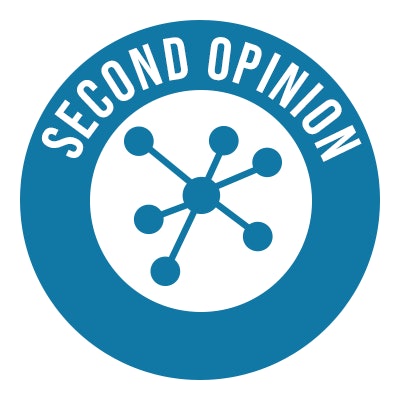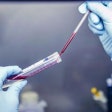
In the early days of the SARS-CoV-2 pandemic it wasn't entirely clear why some patients had mild symptoms while others became critically ill and required intensive care. These critically ill patients often had acute respiratory distress syndrome (ARDS) and a high rate of death. It's now clear that the cause of ARDS in COVID-19 patients is cytokine storm.
 David Grenache, PhD, president-elect of the AACC.
David Grenache, PhD, president-elect of the AACC.Cytokines are small proteins released by many different types of cells, including the white blood cells of the immune system. Cytokines help regulate the immune system's response to an infection and cause inflammation. The storm happens when the release of cytokines goes into an uncontrolled overdrive causing hyperinflammation which damages the body's organs. In the lungs, this inflammation causes fluid to accumulate in the airspaces which then leads to ARDS.
Of all the different cytokines, interleukin-6 (IL-6) has generated the most attention. When measured in the blood of patients with COVID-19, IL-6 is uniformly elevated, with the highest concentrations being observed in critically ill patients. Studies have also demonstrated that increased IL-6 levels are significantly associated with adverse clinical outcomes, including intensive care unit admission, ARDS, and death.
There is also limited evidence that suggests IL-6 can be used for disease monitoring. In one non-peer-reviewed study, 30 patients with severe disease had IL-6 measurements before and after treatment. In 26 of them, the IL-6 concentration was significantly decreased and was concordant with improvements in their lungs as observed by computed tomography (CT) scans. In the four patients whose condition got worse, three showed an increase in IL-6.
There are also some studies that suggest IL-6 test results could be used to guide therapeutic use of drugs that inhibit the biological activity of IL-6. Tocilizumab and sarilumab are humanized monoclonal antibodies against the IL-6 receptor used to treat autoimmune diseases like rheumatoid arthritis. These drugs are now being evaluated in clinical trials to see if they will be of benefit in severe cases of COVID-19.
Given all this, it is not surprising that there is increased interest in IL-6 testing. As an example, in all of 2019, my lab had five or fewer monthly orders for IL-6. Monthly requests stayed in the single digits until April 2020, when there was a dramatic increase. My lab is now seeing a 40-fold increase in IL-6 test orders. I know I am not alone as colleagues around the world have also seen demands for IL-6 testing increase.
For many labs, though, cytokine tests are sent to a reference lab for testing. Given their usual low volumes, that strategy makes sense. However, in the age of COVID-19, everything changes. Tests that are referred out have a longer turnaround time compared to tests performed in-house. If IL-6 testing is to be used to prognosticate and manage critically ill COVID-19 patients, then referring the test to another lab may be inadequate.
The IVD industry has also seen these changes in IL-6 test ordering patterns. While IL-6 testing has been available for years, no test had ever received approval from the U.S. Food and Drug Administration (FDA). As such, clinical laboratories that performed IL-6 tests have done so as a laboratory-developed test. However, Roche Diagnostics recently received emergency use authorization from the FDA for its IL-6 immunoassay. I suspect others will follow.
The real questions, however, have yet to be answered: Does the use of IL-6 testing improve patient outcomes, treatment, or management? Answering these questions will, of course, take time and effort. Until more is known, IL-6 testing isn't quite ready for prime time.
David Grenache, PhD, is president-elect of the AACC and chief scientific officer of Tricore Reference Laboratories in Albuquerque, NM.
The comments and observations expressed are those of the author and do not necessarily reflect the opinions of LabPulse.com.



















